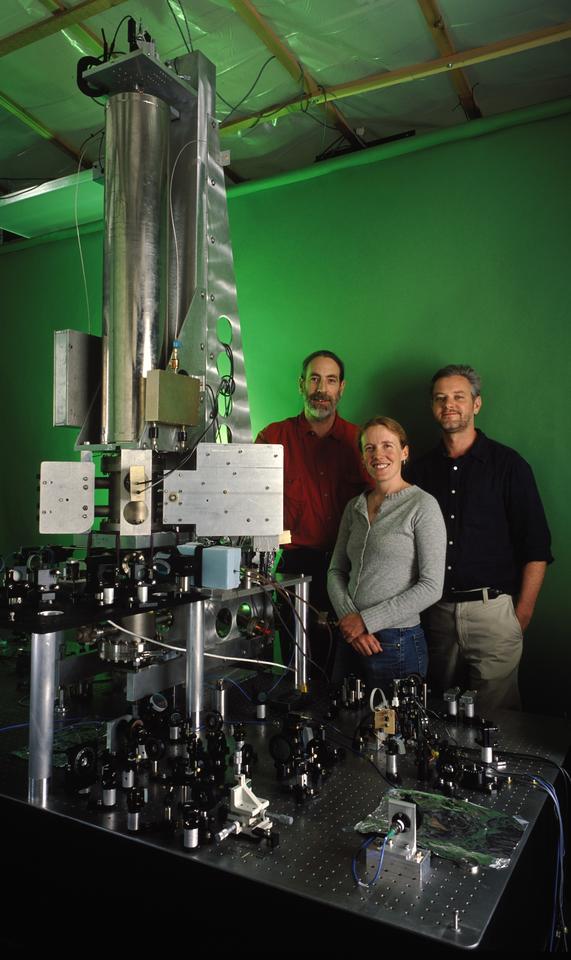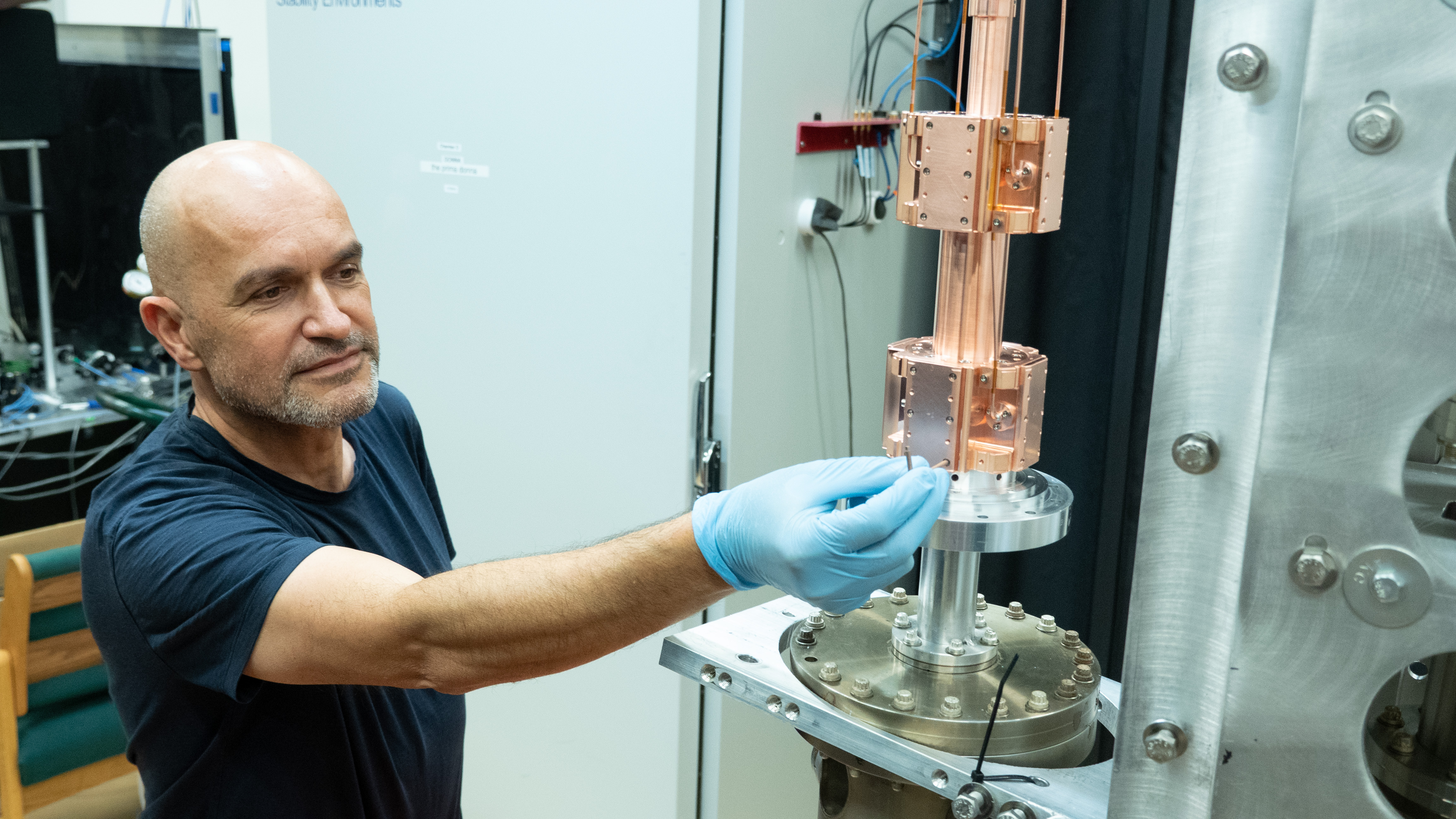Second: The Present
With the atomic clock, scientists continued their quest to split the second into even smaller parts. One barrier they faced was the temperature of the atoms used in atomic clocks. These clocks had so far always been “hot” clocks: They read the microwave transition frequencies of cesium atoms at or near room temperature. Room temperature may seem normal to us, but it’s plenty hot for a gas of atoms. At this temperature, cesium atoms move several hundred meters per second. This limits the clock’s accuracy by making the energy transitions a bit “blurry” and thus hard to measure precisely. In other words, the cesium atoms’ motion slightly increases or reduces the frequency of microwave radiation that each atom needs to make its energy transition.
A key breakthrough came from NIST’s Bill Phillips and colleagues. These researchers figured out how to use lasers to slow cesium atoms from several hundred meters per second to just a few centimeters per second. This makes the atoms far easier to control and get in tune with microwaves of the right frequency. For his contributions, Phillips shared the 1997 Nobel Prize in Physics.
Using laser cooling, Phillips’ co-Nobel recipient Steven Chu and colleagues built the first laser-cooled atomic “fountain clock,” in which atoms are trapped, cooled to near absolute zero and tossed upward. The atoms’ slow trajectory up and back down provided a much longer time for scientists to probe them with microwaves. This design heralded another leap in clock accuracy.
NIST researchers soon built the agency’s first cesium fountain clock, NIST-F1, which started operating in 1999 with an accuracy of one second in 20 million years — more than three times better than NIST-7.

NIST achieved another leap in accuracy in 2014 when it launched NIST-F2. Among other improvements, this fountain clock included a cryogenically cooled chamber to further reduce frequency shifts. NIST-F2’s accuracy was about three times that of the final iteration of F1, meaning it would neither gain nor lose a second in 300 million years. However, it was cumbersome to run because it needed to be cooled using liquid nitrogen to around minus 200 degrees Celsius, so in 2015, it was retired. (Learn more about how NIST-F2 worked.)
NIST used NIST-F2 and NIST-F1 as frequency standards for calibrating Coordinated Universal Time in coordination with the International Bureau of Weights and Measures (BIPM) in France for nearly 20 years. This coordinated effort produces U.S. official time. NIST has now built two new fountain clocks, NIST-F3 and NIST-F4, which are currently being evaluated and tested. Starting next year, NIST-F4 will begin contributing to international timekeeping by performing primary frequency evaluations. NIST-F3 was designed to have high stability and operate continuously but with lower accuracy than NIST-F4. NIST-F3 will be used to improve the stability of the time signals NIST sends out for synchronizing Internet servers, stock exchanges and other devices around the U.S.

At the international level, more than 400 atomic clocks in more than 80 labs in more than 60 countries send data to the BIPM. The bureau assigns each clock a weight based on its stability, then computes a weighted average that serves as International Atomic Time.
Thanks to hyper-accurate atomic clocks, the second is now the most accurately realized SI unit. Five of the other six fundamental SI units — the kilogram, meter, ampere, kelvin and candela — are defined in part based on the second.
Precise timekeeping has also enabled a host of technological applications such as split-second financial transactions, synchronized electrical power grids and high-speed communications.

